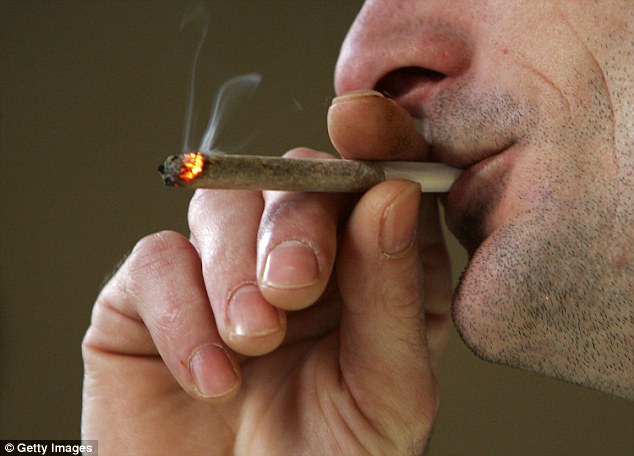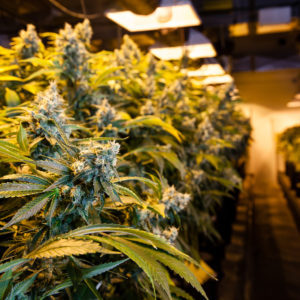Some cannabis studies may overstate the substance’s benefits because participants know when they are ‘high’, one scientist argues. Countless studies have shown that active cannabinoids can effectively treat everything from chronic pain to depression and PTSD – at least according to high people.
Most cannabis studies are double-blind trials, meaning that neither researchers nor participants know which of two groups got a sample containing active cannabinoids, and which got an otherwise identical, inactive substance.
But when feeling ‘high’ tips off participants in studies using THC – the cannabis chemical the creates that euphoric feeling – the results become skewed, argues one Duke University medical professor. Medical marijuana is now legal 29 states in the US.
The legalization movement rode heavily on scientific evidence that cannabinoids – the active portion of the cannabis plant from which marijuana, hashish and hash oil are made – are safe and have have health benefits.
Studies on the therapeutic uses of cannabis have largely followed the gold standard of medical research: double-blind trials. Double-blind trials are meant to eliminate the bias of participants who don’t know if they were given a real treatment or a placebo.
But Duke University professor Dr David Casarett says that cannabis experiments don’t control for the high bias. Most studies on cannabis have participants either smoke or inhale vaporized versions of the plant derivative.
In these studies, researchers make a control by extracting cannabinoids from cannabis. The resulting product tastes, smells and looks identical, but has none of the psychoactive or physical effects of marijuana or other active forms of cannabis.
In his JAMA Internal Medicine article, Dr Casarett cites one study on cannabis for pain treatment in which all but one of the 15 participants correctly guessed that they’d been given the active form of cannabis.
In another, people that got the real cannabis reported feeling ‘high,’ ‘stoned,’ or ‘sedated.’ ‘These participants guess their group assignment in large part because they detect the psychoactive properties of the active cannabis treatment,’ he writes.
In other words, the studies aren’t actually all that blind. When blinding fails, participants are more likely to say they’ve experienced beneficial effects from an active treatment because they believe that they should.
‘These effects should raise substantial concerns over the validity of medical cannabis trials,’ Dr Casarett writes. The ‘high’ associated with cannabis comes from THC, one of the chemicals in cannabinoids.
Dr Cassaret only discusses trials that use cannabinoids that still have THC in them, but not all studies do. In many studies, particularly on cannabis’s effects on physical pain, researchers remove THC from the samples they use so that participants are only getting cannabidiol, or CBD.
CBD does not affect the same receptors as THC, so it doesn’t create the euphoric ‘high’ feeling many associate with cannabis. The effects of CBD are not entirely understood, but it is thought to counteract inflammation in the brain and body.
Dr Casarett suggests that including another psychoactive ingredient in controls, but admits that ‘unfortunately, it is not clear what an ideal psychoactive control would be in a cannabis trial.’
Other studies, however, have shown that some of the effects of cannabinoids, particularly elevated heart rates are actually most pronounced in people who have never used any form of cannabis.
Regardless, he calls for cannabis studies to acknowledge this limitation. Otherwise, ‘there is a very real risk that physicians and patients will misinterpret the results of these studies and see benefits that do not exist,’ he writes.
The differences between THC and CBD
Tetrahydrocannabinol (THC) and cannabidiol (CBD) are both derived from the cannabis plant.
Together, they are part of the cannabinoid group of compounds found in hashish, hash oil, and most strains of marijuana.
THC is the psychoactive compound responsible for the euphoric, ‘high’ feeling often associated with marijuana.
THC interacts with CB1 receptors in the central nervous system and brain and creates the sensations of euphoria and anxiety.
CBD does not fit these receptors well, and actually decreases the effects of THC, and is not psychoactive.
CBD is thought to help reduce anxiety and inflammation.
credit:420intel.com













